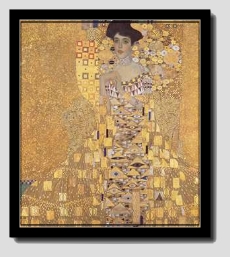

"To every age its art and to art its freedom" reads the inscription above the door of the seccessionist building in Vienna, the icon of the seccesionist art movement of which Klimt stood boldly at the forefront of; this very artistic freedom is something that can always be seen in the art of Klimt. It is but the epitome of his constant struggle to break with the limits and confines of academic and historical tradition.
Klimt can be described as the master of the female form, often potraying women in an erotic light, but a simple fact eludes me: How a simple Austrian symbolism painter managed to eclipse the likes of Van Gogh and Picasso? Whose works of art are world renowned. Until recently, unless you were one of those whom is intimately acquainted with the art-world, it is quite possible that you had never even heard of Klimt. Like you perhaps, i was one of these people.
Klimt, the first of seven children and born into relative poverty, lived an insignifigant existence and never achieved immense recognition for his work outside his home of Austria. In a time when even eroticism in art was considered radical, if anything, Klimt found himself penalised for such. Some even went so far as to protest against his art. Though today, his painting of Adele Bloch-Bauer, a lover, sits proudly in the Neue Gallerie in New York after having sold for the total of $135,000,000.
But why such an amount for a painting so seemingly unimportant? What is it about Klimt that makes him worth such a sum? In the Austrian art-world in the early 20th century Klimt could be seen as a revolutionary. He and other secessionists desired to bring art to the people of Vienna that was free of the bonds and restrictions of academia. Klimt, with other artists like Egon Schiele and Koloman Moser at his side united to bring about a new age of art in Austria. We call it; Art Nouveau.
Though for someone who wanted to break ties with academic and historic tradition, Klimt's art is derisively reminiscent of Egyptian and even Byzantine influence, especially with his decorative use of gold and intense colour. This is evident in one of his more popular paintings titled "The Kiss". But i do wonder, would the art world have been the same if not for Klimt's artistic influence? And how far did this influence stretch?
Klimt and his seccessionist allies found themselves in a state of conflict with Viennese officials and the public, for their art flew in the face of Viennese society, dominantly due to what was perceived as its pornographic tendencies. But after breaking from the establishment Klimt, Moss, Moll and Engelhart and a few more set up the Secession building. This was to be an oppourtunity for the ushering in of a new artistic era. No longer did they rely upon the state for commissions and the oppourtunity to display their work, but they had a place to display their own work and to share their artistic gift with the people. For the first time, modern art had come to Vienna.
The influence of Klimt is both as strong as it is clear, as once Klimt leaves the seccession in 1905 it ultimately fades. But the ultimate goal for any artist is exposure and that is something he certainly achieved in his avid promotion of the Viennese Art-Nouveau movement. The movement was not confined to Vienna itself, but was part of a world-wide change at the turn of a new century.
The 20th century was to be a time of innovation on all fronts, be it artistic, technological or otherwise and it was the work of Klimt that inspired in part this innovation and a move away from set tradition. As such, when we look at the work of Klimt we are not looking at a mere pretty picture, but at radical change and the causal factors of artistic revolution and this is why Klimt is worth $135,000,000.
Article wrote by Dmitri (CL6)
Go Back >>